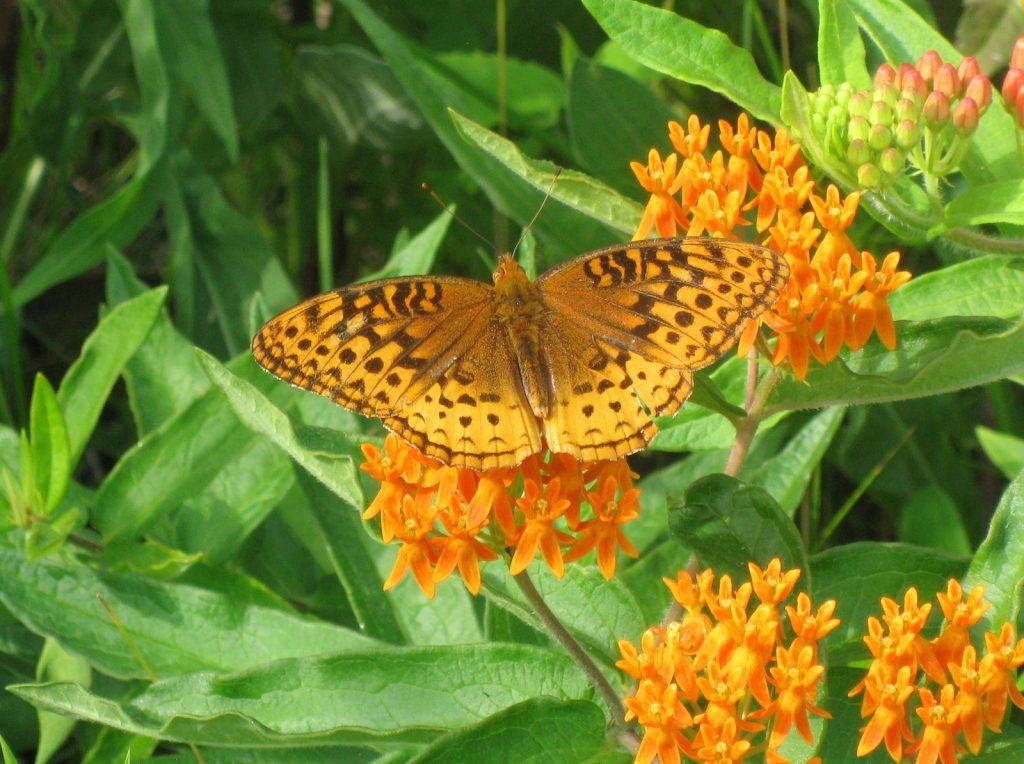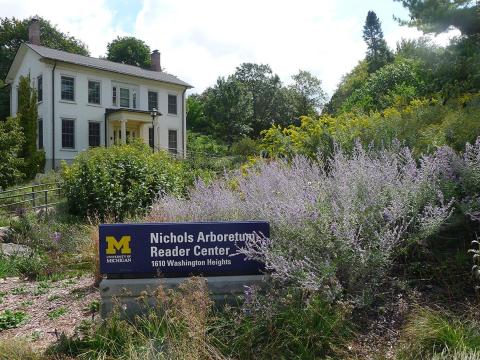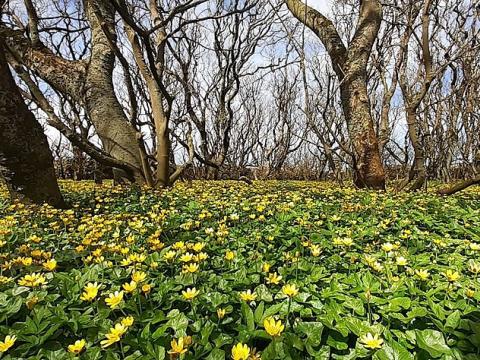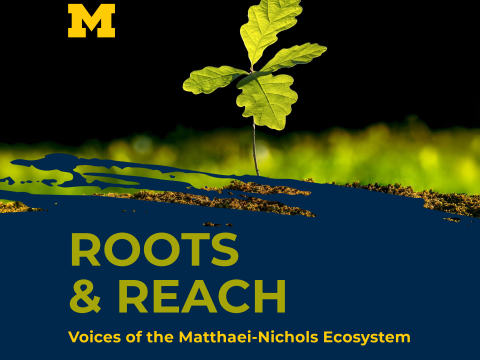
Great Spangled Fritillary photo by Laura Mueller
It’s a hot and sunny July day at the Matthaei Botanical Gardens, where small plants sit side-by-side in nursery pots like soldiers in formation. Among the ranks are yarrow’s small white flowers, young prairie dock, and several native grass species.
Matthaei Botanical Gardens collections specialists grew these plants for the Native Plant Sale that will take place on August 20th and 21st. The plant sale is both a fundraiser for Matthaei Botanical Gardens and a service to its members.
The aesthetic appeal of native plants is showcased at Matthaei Botanical Gardens’ Great Lakes Gardens, which exhibits native plants from a variety of Michigan’s natural communities. Many of the plants for sale this summer started from seed collected from the Great Lakes Gardens.
But, planting native is not just about looks. It is also about helping local wildlife. “People plant native plants in their gardens in order to foster a diversity of butterflies and other insects,” said Mike Kost, an associate curator at Matthaei Botanical Gardens and Nichols Arboretum.
Insects Need Native Plants
Global biodiversity is currently threatened, and some experts have called the current state of insect biodiversity an “insect apocalypse.” Between 1985 and 2018, terrestrial insect populations declined by an average of 10.5 % per decade. About a third of insect species are now at risk of extinction, and another one percent of insect species are added to that list each year. One of the more recent additions to this list is the monarch butterfly, one of Michigan’s beloved species.
A major cause of the decline in insects is the conversion of pristine, natural habitat into urban or agricultural land. “In urban and suburban landscapes, everything is pretty much gone,” said Kost. “Ann Arbor had a lot of oak savanna, or oak openings. We converted it to mowed lawns, housing, subdivisions, and college campuses.” Meanwhile, the remaining unmanaged woodlands are commonly infested with nonnative, invasive plants like honeysuckle, buckthorn, autumn olive, and privet that choke out native plants.
When natural habitat is lost, so too are the native plants that insects depend on. While most flowering plants will provide resources to some insects, non-native plants support far fewer species than native plants. “It’s really about the numbers,” explained Kost. Native goldenrods (genus Solidago) support 135 different caterpillar species in the Ann Arbor area. Oak trees (genus Quercus) support over 450 different caterpillar species. In contrast, most non-native plants will only support a handful of species.
The reason that native plants outperform nonnatives in promoting insect diversity is apparent in their natural history. Native insects evolved alongside native plants over millions of years. Consequently, many of them have adapted to eating or residing in native plant structures. Some insects have mouth parts that are shaped specifically to feed on a particular plant family or genus (a relatively narrow group of plants). “It would be like me handing you a volleyball instead of an apple and saying ‘Here, eat this,’” explained Kost. “Your mouth isn’t even big enough to chomp into a volleyball.” Other insects have evolved to only see the colors of certain plant pigments or recognize certain plant aromas. When those specific plants are missing from a landscape, the insects that rely on them go hungry.
Declines in insect populations also mean declines in the animals that eat them. Birds are particularly at risk as 96% of North American terrestrial bird species rear their young on insects. And they need a lot of insects. Take the eastern bluebird, which needs over 1,000 caterpillars to raise one clutch of hatchlings. Urban areas that lack native plants also lack enough insects for insect-eating birds to successfully reproduce.
Native Plant Gardens are “Homegrown National Parks”
Natural landscapes with a diversity of native plants are essential to support diverse wildlife populations. Yet, there is very little pristine, natural habitat left in the USA. In 2017, urban landscape took up 69.8 million acres in the United States and was increasing by 1 million acres each year. Between 40 and 50 million acres are devoted to lawn, which ecologists refer to as “dead space” that supports very few species.
By adding native plants back to urban landscapes, private landowners can make a difference and help restore native ecosystems. The Great Lakes Gardens are a testament to the impact that native plants have even in a single plot of land. There, myriad butterfly, moth, fly, and bee species flit from flower to flower. “The insects just showed up. We did not introduce any insects,” said Kost. “It really shows you that if you plant it, they will come.”
Doug Tallamy, an ecologist from the University of Delaware, recognizes the potential that private landowners have in restoring native plant communities. Converting the area devoted to lawn alone into native plant gardens would exceed the total amount of land currently protected in our national and state parks (44.3 million acres). And that is just lawn. Some of the land currently used for private woodlots and agriculture could also be brought into the fold.
Tallamy has called for this grassroots movement to form what he calls a homegrown national park. “We need functioning ecosystems everywhere, not just in parks and preserves,” said Tallamy. That includes where we live, work, and shop.
Tips for a New Native Plant Garden
Starting one’s own native garden is not a huge endeavor. Kost had the following advice for the upstart native plant gardener: “I would just simply carve out a spot in your yard, or a couple spots. It doesn’t have to be big. And simply plant native plants! They are super hardy plants.” Kost recommends watering a native plant garden during the first growing season while plants are establishing their root systems. But, little to no watering is required in following years.
Perhaps the biggest hurdle for the newcomer is learning which plants to purchase and from where to purchase them. Online resources like the Natural Community Plant Lists from Michigan Natural Features Inventory, National Wildlife Federation’s Native Plant Finder and the University of Michigan Herbarium website can help gardeners search for native plant species. In addition to Matthaei Botanical Gardens, the following local nurseries are great places to purchase Michigan native plants: Wildtype, New Leaf Natives, Feral Flora, Ypsilanti Native Plant Nursery.
Derek Smith tells stories about science and the natural world for a wide audience. He has written for institutions, blogs, and in magazines as a freelancer, intern, and volunteer. His writing has been featured in the ScienceBites blogs and the Matthaei Botanical Gardens and Nichols Arboretum newsletter.



